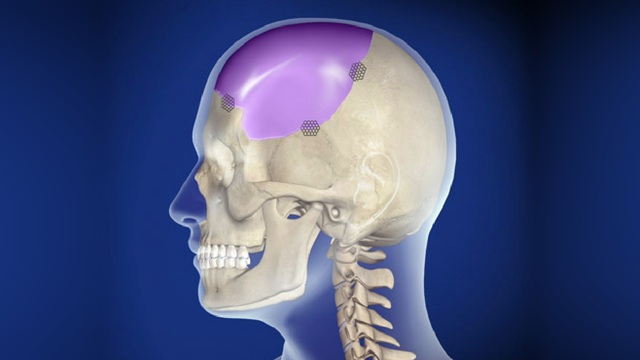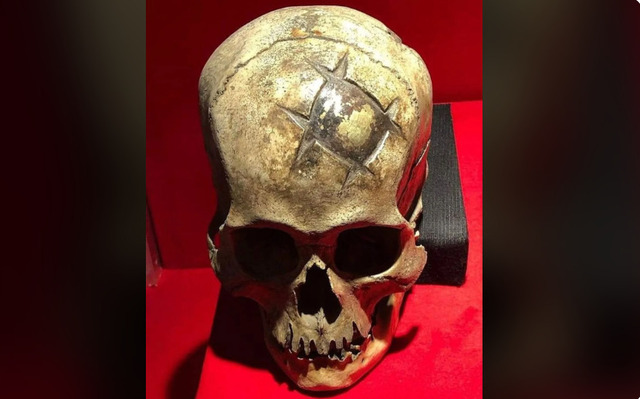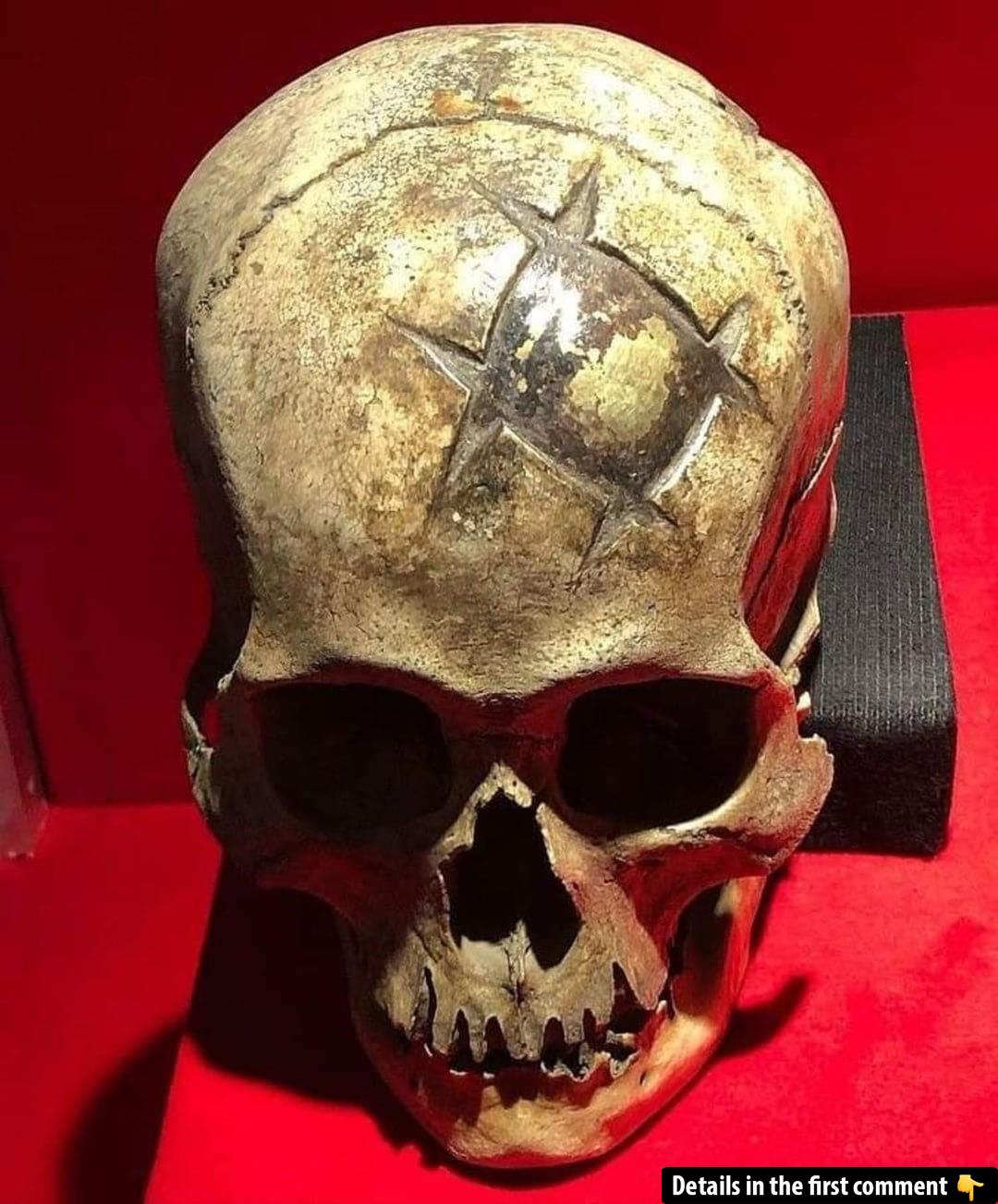In the highlands of Peru, an ancient surgical marvel has been uncovered—an expertly performed cranioplasty dating back to around 400 CE. This remarkable discovery features a gold inlay used to repair a skull injury, offering a rare glimpse into the advanced medical practices of ancient civilizations. While the patient’s survival suggests a successful procedure, many details about the techniques and cultural significance remain unclear. As researchers delve deeper, this find challenges our assumptions about ancient medicine and opens new questions about early surgical practices.
What Is Cranioplasty?
Cranioplasty, the surgical procedure to repair defects in the skull, has been an important part of medical history, both in ancient and modern times. Today, cranioplasties are commonly performed using advanced materials such as titanium or medical-grade plastics. However, in ancient Peru, it is believed that materials such as bone, shell, and, in the case of this discovery, gold, were used for the procedure. The use of gold is especially significant due to its durability, beauty, and spiritual importance in ancient Andean culture.
This discovery provides us with a glimpse into the sophistication of ancient medical practices. Yet, we must remain cautious when interpreting this find. While it is tempting to view this cranioplasty as a highly advanced surgical technique, we must acknowledge that many of the details surrounding the procedure and the methods used are still based on hypotheses and may require further verification.
The Discovery of the Peruvian Cranioplasty
The cranioplasty was uncovered during excavations of a burial site in the Andean region of Peru. Researchers found the remains of an adult male who had suffered a significant skull injury, possibly from warfare, an accident, or ritual violence. What is remarkable is that, unlike most individuals who would have died from such injuries, the man underwent a surgical procedure in which part of his skull was replaced with a gold inlay.
Initial findings suggest that the patient survived the procedure, as indicated by the healed bone around the gold inlay. However, while this evidence points to a successful surgery, we must be cautious in drawing conclusions. The exact methods used by ancient Peruvian surgeons, and how they managed to achieve such a successful outcome without modern tools, still remain a mystery. Further research is needed to confirm these assumptions and clarify the process involved.
Video
How Did They Perform Cranioplasty in Ancient Peru?

While the exact surgical techniques used by ancient Peruvian surgeons are unknown, researchers have speculated about how the procedure might have been carried out. It is thought that the surgeon would first clean the wound and remove any damaged bone fragments. Then, a piece of gold would be shaped to fit the cranial defect, and the inlay would be inserted and secured in place.
However, this is still speculative. The process of how they achieved such precision in crafting the gold inlay and securing it remains unclear. It is possible that ancient healers used natural anesthetics, such as coca leaves, to dull the pain, but this is still a theory. Similarly, the methods used to sterilize the area before surgery—such as boiling water or alcohol-based tinctures—are plausible but not yet confirmed. Until further studies are conducted, we must remain cautious in assuming the details of this surgery.
Why Gold? The Symbolic and Practical Use of Gold in Cranioplasty
The choice of gold as the material for the cranioplasty is intriguing. Gold was highly prized in ancient Peru, not only for its durability and beauty but also for its symbolic significance. It was often associated with the divine, thought to be eternal and impervious to decay. The use of gold in this cranioplasty likely served a dual purpose: it was both a practical solution to the skull injury and a symbol of the patient’s importance, possibly indicating a high social or spiritual status.
While this seems plausible, the exact cultural and symbolic reasons behind the use of gold remain speculative. The inlay could have served as a mark of distinction, or it might have been used to impart spiritual protection to the patient. However, these are educated guesses, and more research is necessary to fully understand the cultural context of this surgical practice.
The Cultural Significance of Skull Surgery in Peru
Trepanation, a procedure where a section of the skull is removed to treat head injuries, relieve pressure, or address other medical conditions, was common in ancient Peru. Archaeological evidence shows that many ancient Peruvian cultures practiced trepanation, and it was surprisingly successful in many cases. The cranioplasty discovered in Peru, which involved replacing a part of the skull with gold, represents a particularly sophisticated example of skull surgery.
That being said, trepanation and cranioplasty were widespread practices across the ancient world. While this discovery is remarkable, we must acknowledge that much of what we know about these procedures is based on fragmented evidence. Further studies are required to gain a more comprehensive understanding of the role of these surgeries in ancient Peruvian society.
The Patient’s Legacy: Survival and Status
The patient who underwent this cranioplasty likely lived with the gold inlay for a significant period of time, suggesting that the procedure was not just a medical necessity but also had a social or cultural significance. The presence of gold could have marked him as someone of high status, and the survival of such a complex surgery might have been seen as a badge of honor or divine favor.
However, we can only speculate on the precise significance of the inlay in the individual’s life. The fact that he survived the surgery indicates a remarkable level of medical expertise, but what the gold inlay truly represented—whether as a mark of distinction or spiritual protection—is still an area open for further exploration.

What This Discovery Tells Us About Ancient Medicine
This discovery challenges the assumption that complex medical procedures were a modern development. Ancient Peruvian surgeons were likely capable of performing sophisticated surgeries, as evidenced by the cranioplasty. The patient’s survival suggests that ancient medicine was not as primitive as often assumed, and this find underscores the creativity and ingenuity of ancient societies.
However, while this discovery is fascinating, we must avoid jumping to conclusions. Many aspects of this early cranioplasty still need to be investigated, and some assumptions may be subject to revision as further research is conducted.
The Importance of This Cranioplasty Today
For modern researchers, this cranioplasty is not just an archaeological curiosity; it serves as a reminder of the long history of human innovation. It shows that even in ancient times, humans were pushing the boundaries of what was possible, trying to heal and improve the lives of those around them.
Yet, to fully appreciate the medical knowledge of ancient societies, more research and verification are needed. As further analysis is conducted, we may uncover new insights into the methods, cultural practices, and motivations behind this early surgery.
Conclusion: A Golden Example of Human Ingenuity
The cranioplasty from ancient Peru is a golden example of human ingenuity, but many aspects of the procedure remain speculative. While it is clear that ancient Peruvian surgeons performed a complex and successful procedure, the full details of their techniques and the cultural significance of the gold inlay remain subjects for further study. This discovery reminds us of the remarkable creativity and resilience of ancient societies, but it also highlights the importance of continued research to verify and expand our understanding of early medical practices. Until more conclusive evidence is gathered, we must approach this discovery with both fascination and caution, ready to uncover the full story of this extraordinary ancient achievement.
Video
Watch Ancient Aliens: Paracas Skull DNA Test (Season 10) on History to dive into the mystery behind the Paracas skulls. Don’t miss this intriguing episode!



